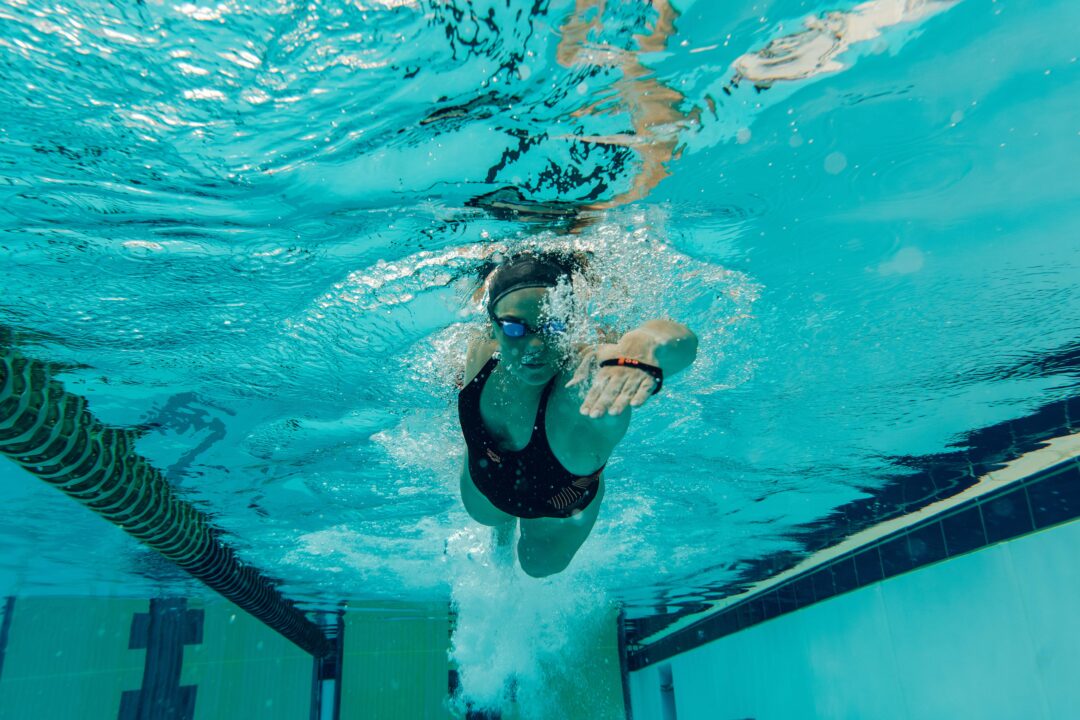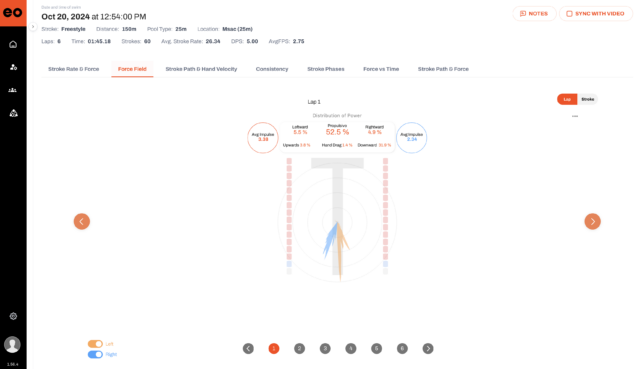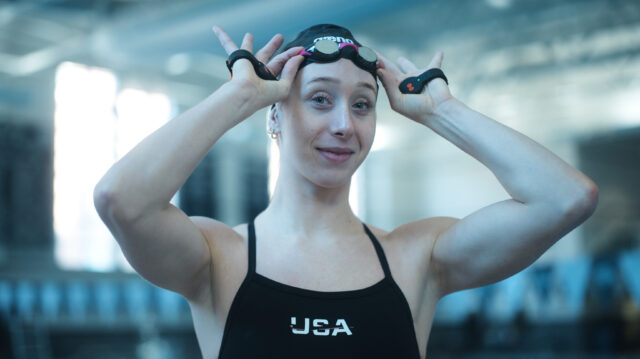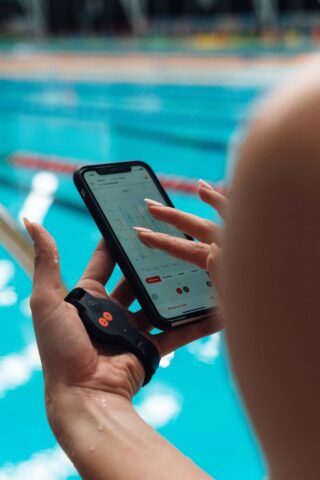Courtesy of eo SWIMBETTER, a SwimSwam partner.
By Sonya Porter, High Performance Consultant, Singapore Swimming (Former Technical Director).
As we enter an era where data-driven training is becoming the norm, the role of the modern swim coach is evolving. With wearables and advanced technologies like eo SwimBETTER now accessible to athletes of all levels, integrating technology into training programs is no longer optional – it’s essential. Coaches who fail to adapt risk being left behind as the sport accelerates, playing catch-up to land-based sports that have leveraged data for years to enhance performance.
The key questions for coaches
This technological shift raises some important questions:
- How do we effectively integrate technology into our training programs?
- What data should be prioritized?
- Most importantly, how do we use this data to help our athletes reach their full potential?
eo SwimBETTER simplifies the science, helping coaches and swimmers focus on what truly drives progress.
Start with what matters: identifying key metrics
The first step is identifying the key metrics that will drive the most progress. With the overwhelming amount of information new technologies generate, only the most actionable data should inform training decisions.
eo SwimBETTER simplifies what matters: a clear starting point, trackable progress, and insights into how technique shifts under fatigue. And since it’s approved for use in competition – coaches finally have a tool to help bridge the gap between training technique and race-day execution.
One of the most valuable metrics across all ages and skill levels is propulsive force. At its core, swimming is about maximizing propulsion while minimizing deceleration throughout a race. Over the past year, I’ve incorporated eo SwimBETTER into my coaching to measure how a swimmer generates propulsion through each hand movement – a capability previously limited to high-performance labs. What was once only available at the highest level of the sport is now accessible right on any pool deck.
When we are able to quantify propulsion, we gain crucial insight allowing us to set focused, measurable goals. For example, by incorporating eo SwimBETTER, athletes like Paige Madden were able to make targeted improvements in stroke efficiency and power. Without measurement, propulsion remains abstract. But when we sync eo SwimBETTER’s analysis with video (something that is very easy to do in the eo SwimBETTER platform), we get a holistic view of an athlete’s stroke mechanics, – revealing how other factors like kick, breath timing, and body rotation may be contributing to losses in propulsion.
Athletes need to own their progress
For technology to make an impact, it needs to be used consistently, and this only happens when athletes are genuinely engaged. They need to own their data and feel they have input into their progress.
With eo SwimBETTER, athletes can access their data anytime on their phone – tracking progress, identifying technical changes, and seeing how adjustments impact their results. Once they understand the connection between their metrics and how they relate to their goals, motivation skyrockets, and communication with their coach takes on a whole new meaning.
From a coaching perspective, tracking every metric for every athlete in every session isn’t just unrealistic – it’s counterproductive. Not because the data lacks value, but because it distracts from what matters most: keen observation. Instead, by empowering athletes to take responsibility for their data and performance, coaches can focus on designing daily environments that challenge and stretch athletes toward specific adaptations relating to their skills and goals. The data becomes a collaborative feedback loop – a bridge between athlete ownership and coach insight – rather than a burden.
The power of experimentation and gamification
Technical growth thrives on experimentation which is essential to skill development. Athletes must feel empowered to test new approaches – some will work, some won’t. With instant feedback from tools like eo SwimBETTER, athletes can conduct their own A/B testing on their technique, seeing firsthand what leads to better outcomes.
The challenge lies in balancing the complexity of data with the athlete’s ability to understand and engage with it. This is where gamification comes into play. By incorporating elements of competition and reward, athletes become more invested in making technical changes and get excited to explore. Simple test sets that challenge athletes to improve a specific metric – such as propulsive force – can turn learning into a game.
For example, the following set could be used to help swimmers feel and improve their catch:
8×50 Freestyle with eo SwimBETTER. Review and log your Propulsive Force after each 50.
- #1: Regular catch
- #2: Palms facing straight down
- #3: Palms turned inward with the sides of your hands slicing the water
- #4: Exaggerated ‘S’ stroke
- #5-8: Freestyle Experimentation. The goal is to find a stroke that achieves a 15% increase in propulsive force compared to #1. If successful, the athlete earns a reward.
To further enhance engagement, we can add an extra challenge:
4 x 50 Descend: Maintain or increase propulsion, while decreasing time. If both conditions are met, the athlete earns a reward and/or moves up the leaderboard.
This shifts the athlete’s focus from simply chasing faster times to mastering technique. Data is the guide, and skill mastery becomes the motivator.
Looking ahead: the data-driven future of swimming
There’s no denying the future of swimming is data-driven. As technology evolves, more sophisticated tools will emerge, with AI and machine learning unlocking even deeper insights and even more individualized training.
Right now, tools like eo SwimBETTER are paving the way – making elite level analysis accessible and actionable to all. By focusing on the right metrics, encouraging experimentation, and empowering athletes to take control of their progress, we’re not just enhancing performance – we’re reshaping the culture of training.
Data will never replace the art of coaching, but it will enhance it. And in that lies the future of our sport.
Find out more about eo SwimBETTER at eolab.com/SwimBETTER or follow them on Instagram, Facebook and LinkedIn @eosportslab.



